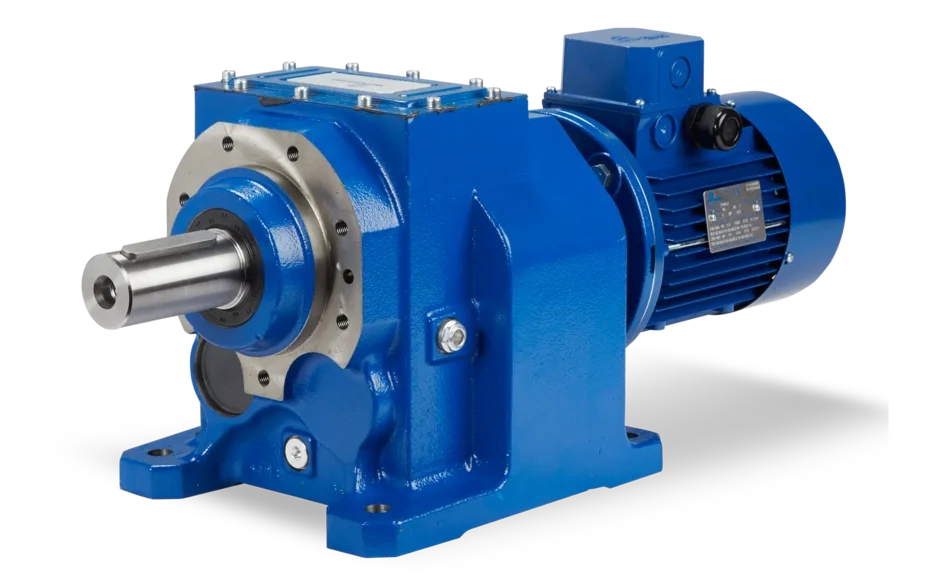Gearboxes are crucial components in various industries, as they transmit mechanical power and torque from one rotating part to another. They come in different types, such as bevel, helical, and worm gearboxes. In this article, we'll discuss how each of these gearboxes works, their efficiency, advantages, disadvantages, and applications in different industries.

A helical gearbox works by using helical gears, which have teeth that are cut at an angle to the gear axis. This angled tooth profile enables the gears to engage gradually, resulting in smoother, quieter operation and increased load-carrying capacity compared to spur gears. Helical gearboxes transmit power between parallel or non-parallel shafts, depending on the gear arrangement.
Helical bevel gearboxes are highly efficient, with efficiency ratings typically ranging from 90% to 98%. This high efficiency is attributed to the helical gears’ tooth geometry, which allows for greater tooth contact, smoother engagement, and reduced friction during operation. The use of helical bevel gears also results in reduced noise and vibration, making them suitable for high-speed and heavy-duty applications.
Helical bevel gears are widely used in various industries, including process controls & material handling, and heavy machinery, among others. Their high efficiency, smooth operation, make them suitable for a wide range of applications.
There are two primary types of helical gears: single helical and double helical (or herringbone) gears. Single helical gears have teeth that are cut at an angle to the gear axis, while double helical gears have two sets of teeth arranged in a V-shape or herringbone pattern, which helps to eliminate the axial thrust generated by single helical gears.
Helical gearboxes offer several advantages, including smooth and quiet operation, high load-carrying capacity, and the ability to transmit power between non-parallel shafts. However, they also have some disadvantages, such as higher manufacturing costs, increased complexity, and the generation of axial thrust in single helical gears.